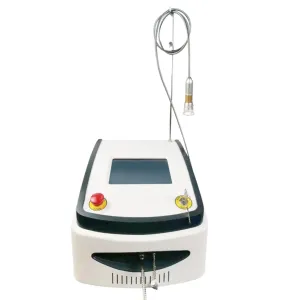The Impact of Laser Technology on Animal Rehabilitation
The field of animal rehabilitation has witnessed so
much progress lately, including the most thrilling innovation being lasers. It
is a gentle and non-invasive therapy that gives hope to animals in pain,
inflammation, and injury by providing for faster and comfortable recovery.
How Does Laser Therapy Work?
Therapeutic lasers, known as cold
lasers, selectively emit light beams into deeper body tissues. Consequently,
this light interacts with cells, causing biological changes in the body that
encourage healing.
Evaluating the chief beneficial
aspects of laser therapy:
·
Diminishing tenderness and inflammation: Laser light application intensifies blood flow
that boosts tissue repair by providing more oxygen and nutrients.
· Quickening healing in tissues: Besides, blood flow also enhances the healing of
damaged tissues by allowing nutrients and oxygen to be transported to them.
·
While at the same time enhancing nerve functioning: It is a measure of repairing nerves where an
animal has nerve damage or paralysis.
·
Wound treatment: It will heal rapidly wounds and prevent their
infection.
A Powerful Tool for a Variety of Conditions:
It has been demonstrated that various illnesses in
animal patients can be treated using laser therapy.
· Musculoskeletal injuries: Laser therapy assists in reducing pain and
inflammation while healing musculoskeletal injuries such as strains, sprains
and tendonitis faster.
· Arthritis: Pain management for arthritis and reduced
inflammation by using laser therapy improves the quality of life for animals
suffering from the condition.
·
Post-surgical recovery: After surgery, inflammation is reduced and wound
healing accelerated due to laser therapy, as it reduces pain and promotes
tissue regeneration.
· Skin conditions: Among them are dermatitis or lick granulomas.
The Advantages of Laser Therapy:
When compared to traditional rehabilitation
methods, laser therapy is more advantageous:
· Reduction of Inflammation and Cure for Pain: Pain relief and inflammation control are among the most distinctive features of laser therapy. The light energy releases endorphins, natural painkillers in the body, and enhances blood flow and lymphatic drainage, preventing swelling and inflammation. This is very useful in arthritis, muscle sprains, and post-surgical pain in animals.
· Faster Tissue Healing: Laser therapy can remarkably speed up tissue healing by stimulating cells. There is an entrance of light energy when it penetrates deeply into the tissues; this leads to an increase in collagen production, which is essential for tissue repair and growth. As a result, wounds, fractures, and soft-tissue injuries can heal faster, restoring mobility and normal functioning in animals within a short period.
· Nerve Function Enhancement: Laser therapy can also be helpful in the case of animals suffering from a paralyzed or damaged nerve to enhance their nerve function. The light energy stimulates nerve cell regeneration and enhances neural conduction, improving muscle control and sensation. This can be helpful for animals who have suffered spinal cord injuries, peripheral nerve damage, and other neurological diseases.
· Increase Range of Motion: Laser therapy can help broaden the range of motion in animals with rigid joints or muscular contractures. Consequently, this breaks scar tissues and adhesions that normally limit movement: such would increase flexibility, thus increasing the range of motion and making it possible for animals to move more freely and comfortably.
· Non-penetrative and minimal strain: Laser therapy is an alternative that does not
involve penetration and minimizes stress on animals. Traditional therapies,
including surgery and medication, require injections or incisions, which can be
of particular advantage for anxious or afraid creatures. Pain is uncommon
during treatment, and most animals tolerate it well, making it a preferable
choice for those who are sensitive to other forms of therapy.
Looking Ahead: The Bright Future Of Laser Therapy
In Animal Rehabilitation
Ongoing research into laser therapy has brought
about different ways to use it in animal rehabilitation. For instance, new uses
aim to treat neurological conditions, promote bone development, and ease
anxiety. Laser therapy will play a big role in animal rehabilitation for many
years based on its effectiveness and few side effects.



Comments
Post a Comment